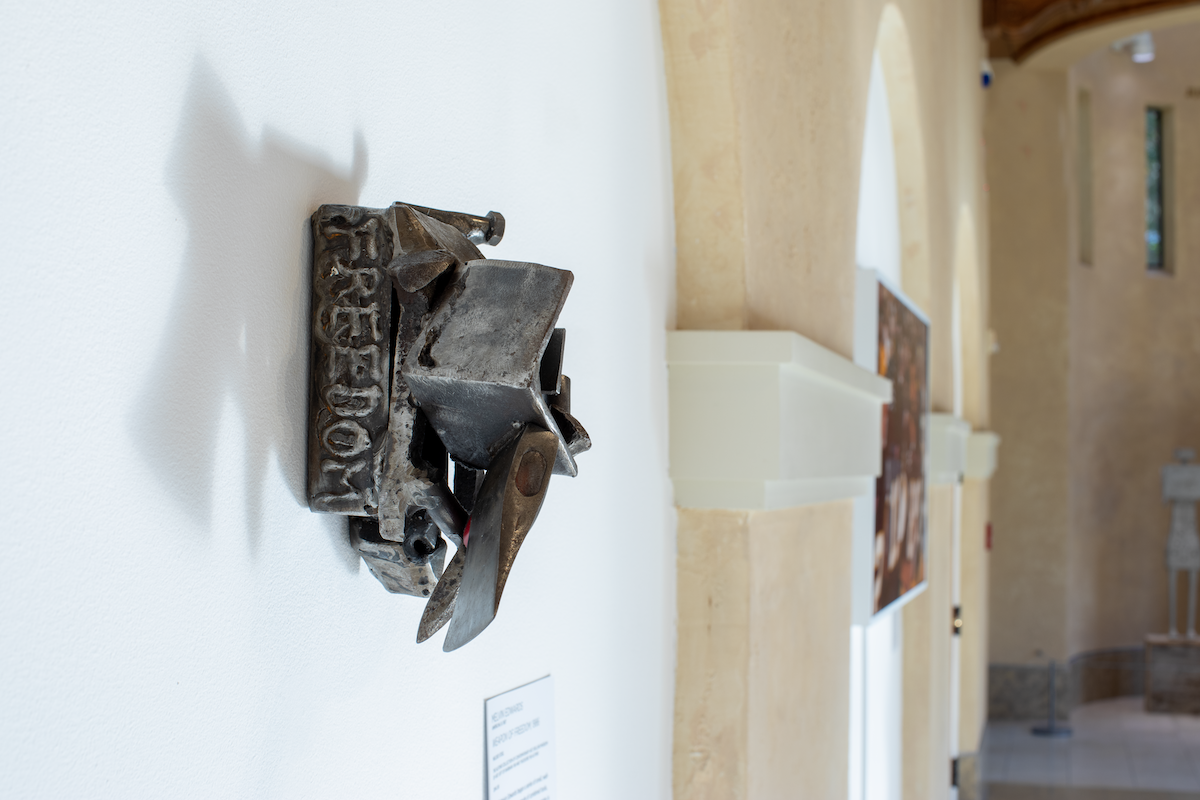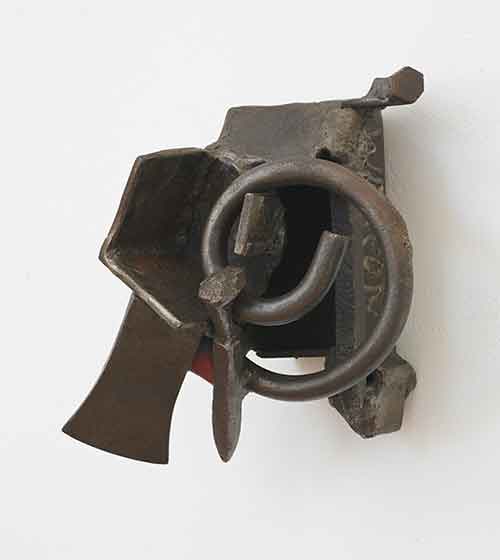
Melvin Edwards
(American, b. 1937)
Weapon of Freedom, 1986
Welded steel
11 x 9 x 6 in.
The Alfond Collection of Contemporary Art, Gift of Barbara ’68 and Theodore ’68 Alfond, 2014.1.58. © 2015 Melvin Edwards/Artists Rights Society (ARS), New York.
Born in Houston, Texas, Melvin Edwards learned to weld while an art student in Los Angeles, California. Responding to his involvement in anti-housing-discrimination protests and activism surrounding the shooting of Ronald Stokes by the LAPD, Edwards began making welded steel sculptures that he called Lynch Fragments. Originally, these sculptures were informed by his close study of African American history and anti-lynching literature and were meant to evoke both the danger and strength of African American life.
Edwards moved away from the Lynch Fragments upon moving to New York in 1967, briefly revisiting the format in 1973 during a period of anti-Vietnam-war activism. He abandoned them again, however, believing that they required an obsessive devotion that crowded out other work. A 1978 retrospective exhibition at Harlem’s Studio Museum made him realize that he still had more to do with the series, however, and he has made Lynch Fragments ever since.
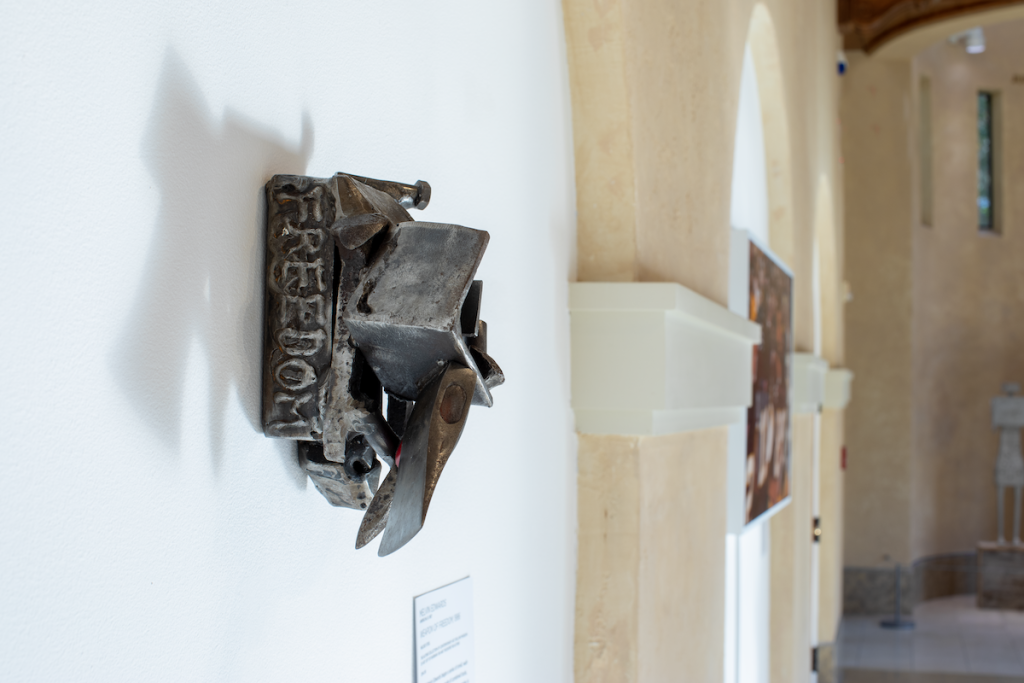
The Fragments are a unique sculptural form; neither fully in the round (they are always hung on gallery walls) nor fully relief, they also combine both identifiable found objects and abstract forms.
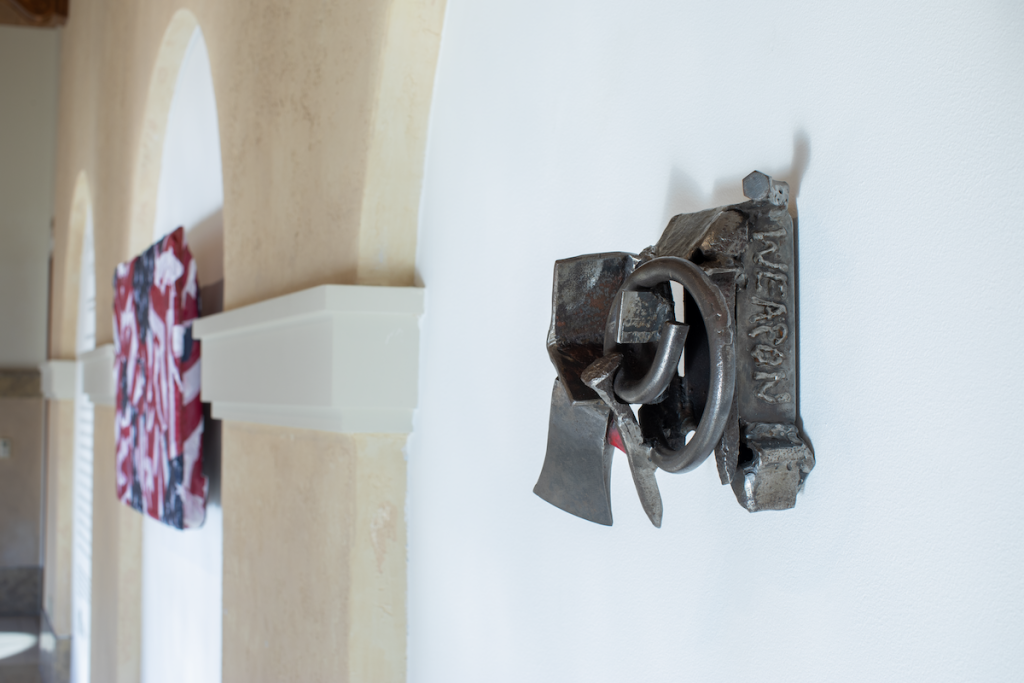
Weapon of Freedom
In Weapon of Freedom a railroad spike and ax head evoke the Weapon of the sculpture’s title while also calling back to African and African American blacksmithing traditions that Edwards gleaned from his family’s oral tradition as well as his extensive travels in Africa. The spiral form at the center helps to integrate the various forms while also creating a sense of tight compression that lends the piece an additional air of violent potential.
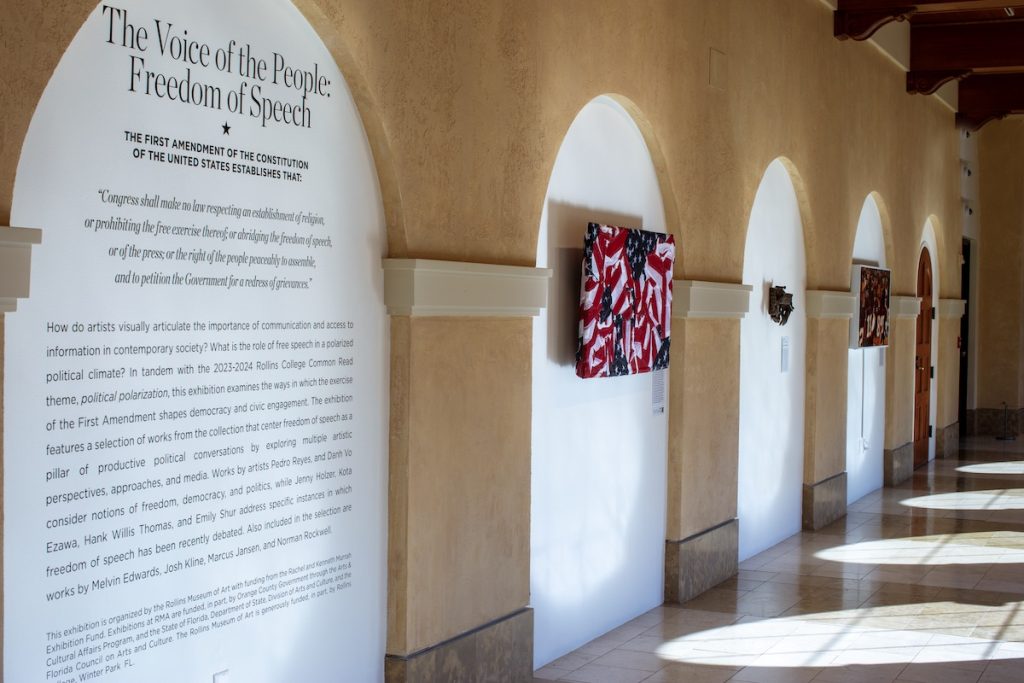
Voice of the People: Freedom of Speech
View Melvin Edward’s Weapon of Freedom in person at the Voice of the People: Freedom of Speech exhibition at Rollins Museum of Art in Winter Park, Florida. You can even take a virtual tour of this thought-provoking exhibition.

